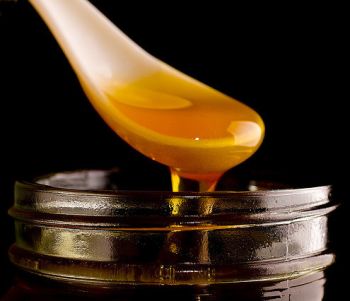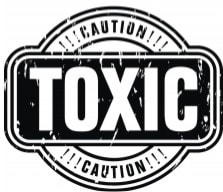How should I buy manuka honey? What is UMF or MGO? Or NPA? Are you confused? 🙂
There are 3 ways of grading manuka honey, all of them trying to reflect the quality of honey, by measuring its antibacterial properties: UMF, MGO and A (Active).
There are two types of antibacterial activity in honey.
1. Hydrogen peroxide activity. It is found in all honeys, including manuka honey. This activity is triggered by an enzyme found in honey, glocose oxidase. It was initially added by the bees to the nectar, to turn it into honey. This enzyme will break the glucose down into gluconic acid and hydrogen peroxide.
Hydrogen peroxide (H2O2) is a disinfectant used in our medicinal world since the beginnings of medicine. Unfortunately, it is unstable in the presence of air and light, and this makes it difficult to store and use. Yet, in honey it is stable and released little by little. Read more about the antibacterial properties of honey.
Storing honey is an issue that has to be considered, because glucose oxidase is reduced by heat, light and some forms of energy like microwaves. Some honeys are more sensitive to light exposure than others.
2. Non peroxide activity (NPA) If we neutralize the activity of oxidase, using a different enzyme called catalase, we will not have hydrogen peroxide activity anymore. Manuka honey has showed to have something else that leads to an antibacterial effect. Scientists called this a non peroxide activity, which is not found in all honeys, though in quite many of them (according to recent news). To measure this non peroxide activity, they invented UMF, and others added MGO content on the labels.
Some marketers use this grade on their jars: NPA followed by a number. We should be very careful with them. NPA rating is not a direct measure of antibacterial activity. The numbers that follow show the concentration (as % in solution) of phenol, a standard reference antiseptic. It’s a way of showing the level of antibacterial activity in honey compared for potency with other antibacterial substances. (this aspect was recently researched by Peter Molan, formerly Professor in Biological Sciences and Director of the Honey Research Unit at the University of Waikato and presented in the study “The true relationship of NPA and MGA levels”).
Manuka honey with NPA20 DOES NOT mean it is twice as good as NPA10. This is due to the fact that the measurements do not start from zero, but from 8. A rating of 8 is the minimum level of activity that can be detected in the assay. (We have the same situation in measuring temperature: 100°F (38°C) is not twice as warm as 50°F (10°C) because the measuring scale starts at 32°F. But a temperature of 100°C is exactly twice as warm as 50°C because the Centigrade scale starts at zero.)
As a result, a honey rated NPA 30 has a bit over three times as much antibacterial potency as one rated NPA 15, not twice as much. (Le., 30 – 8 = 22 is compared with 15 – 8 = 7).
Why 8 and not 0?
Because of what is called “minimum inhibitory concentration” – a minimum concentration is required for all antibacterial substances that are necessary to affect bacteria. Phenol at a concentration of 7% or less has no antibacterial activity at all, in the testing method used.
What is UMF?
UMF = Unique Manuka Factor (trademarked in New Zealand). It refers to the non-peroxide activity in honey. (On some jars of honey you will see this grade: NPA. This describes the non-peroxide activity in honey, but it is not a trademark.) It analyses 3 key markers: MGO, DHA and Leptosperin.
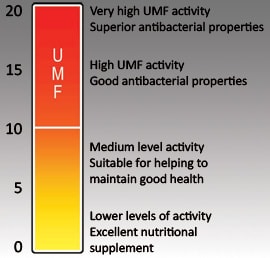 UMF ranges from 10 to 25, the higher the rating, the more potent, and of course, the more expensive, the honey.
UMF ranges from 10 to 25, the higher the rating, the more potent, and of course, the more expensive, the honey.
It represents a standard of NPA (non-peroxide activity) that is compared to the disinfectant phenol. The numbers following the letters UMF, refer to the percentage of phenol in water.
E.g. UMF12 equals an NPA activity equal to or greater than a 12% solution (%w/v) of phenol/water.
Yet, some manuka honey manufacturers say that this UMF is unreliable. Kerry Paul, chief executive of Manuka Health says: ‘But two tests done at different times on the same batch of honey can give very different results!’
Producers are allowed to use the UMF mark if they belong to The UMF Honey Association. Recently this association has implemented an independent honey verification program in the United Kingdom with Fera (the Food and Environmental Research Agency).
What is MGO?
Methylglyoxal. It’s a toxic compound found in high concentrations in manuka honey (up to 1000 times greater than in other honey, according to German researchers), and it is considered to give its antiseptic edge.
It was discovered in 2008, by Professor Thomas Henle of University of Dresden, Germany. He said that it is Methylglyoxal that gives Manuka honey its unique antibacterial properties.
Dietary Methylglyoxal is resistant to heat, body fluids, light, and enzymatic activity, thus considered very stable. This is why this compound found in manuka honey can be considered superior to the glucose oxidase enzyme, which is found in all honeys and gives the hydrogen peroxide antibacterial activity.
Methylglyoxal content can range from 0 mg/kg to 1000mg/kg, because its level can vary from place to place and year to year. Anything higher than 100 mg/kg is considered antibacterial, the higher the concentration, the more antibacterial activity.
The testing done for Methylglyoxal is accurate, with a plus or minus 5% margin of error. The MGO™ Certification is scientific, precise, and transparent and leaves no room for misleading. It is also very easy to explain to consumers: MGO™ 100+ Manuka Honey means that in 1 kg of honey there are 100 mg of Methylglyoxal. And so on.
MGO™ is a trademark of Manuka Health New Zealand Ltd, and this grade is seen only on their own products.
Is MGO effective?
Professor Thomas Henle of the Technical University of Dresden (Germany) discovered that 100mg/kg of Methylglyoxal in the honey is a minimum level to totally inhibit E.coli and Staphylococcus Areas in vitro. IN VITRO.
And on single bacteria. Further research showed different bactericidal rates when tested on biofilm forms. See details about this study here: “How to kill antibiotic resistant bacteria!” and here What kills Staphylococcus aureus? Does manuka honey kill MRSA?
While its amazing efficacy in healing any kind of wound, burn or skin infection, due to its general antibacterial properties, especially MGO, is not to be doubted, further research and clinical trials must be done in order to confirm its efficiency in killing internal bacteria. And especially to confirm if such a high quantity of MGO, once ingested, doesn’t affect the general health of the body. This is still not elucidated by science or practice. And the toxicity is very high with very damaging potential. Read more on MGO’s safety here: “Is MGO in honey safe to eat?”
 YET
YET
Further research at Waikato University in New Zealand has shown that MGO in manuka honey is derived from dihydroxyacetone (DHA), a substance that can be found in the flowers of some L. scoparium subspecies. And this DHA, in time, turns into MGO. In the research made, MGO doubled in concentration in the first month of storage and many other manuka honeys tripled in under 4 months of storage.
Bottom line: if the MGO content is changing all the time, it cannot represent the proportion of manuka nectar, it cannot be sold with an accurate MGO indicator, it cannot represent the power of its antibacterial properties.
UMF and MGO measure the strength of Manuka honey in different ways, but there is a relationship between the level of Methylglyoxal and the Non Peroxide Activity, as measured by the UMF.
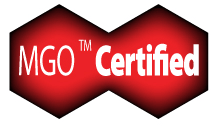 What is ACTIVE?
What is ACTIVE?
Not all manuka honey has peroxide activity, and not all manuka honey has non-peroxide activity. There are some manuka honeys that have them both, but some have little or none. The honey is also influenced by seasonal variation, with both types of activity being individually either present or absent, in any particular honey season.
That is why the best way to express manuka honey’s quality is by using the grade A or Active, or Active Manuka. It expresses the existence of antibacterial activity, either peroxide activity or non-peroxide activity, or even both of them.
The grade ACTIVE is more used in USA and Canada. These countries, through the Food and Drug Administration or the Canadian Food Inspection Agency, do not support the medical claims covered by Unique Manuka Factor Association in New Zealand. Therefore not legally approved for foods and honeys. The producers that use ACTIVE grade, followed by a number, take also into consideration some other factors that define a honey’s quality: live enzymes, pollen count, chemical/residue analysis, antioxidant levels, the raw status or unpasteurization process and various other phytochemical factors found in Manuka honey. In North America, Wedderspoon is considered a very good and reliable manuka honey producer.
Wedderspoon has created KFactor™, an indicator of how much manuka pollen there is in the total content of pollen found in manuka honey. It is a marker of genuine manuka honey. It does not refer to its therapeutic value.
Here is my recommendation for eating a safe, tasty and therapeutic manuka honey:
Comvita Certified UMF 15+ (Ultra Premium) Manuka Honey – New Zealand’s 1 Manuka Brand
And here is why: What is the best manuka honey? From what brand?
Conclusion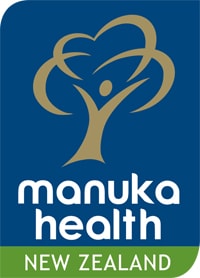
UMF = Unique Manuka Factor, a standard that tests the antibacterial property of a honey and compares it to phenol, a disinfectant. (The numbers following the letters UMF, refer to the percentage of phenol in water). Any producer must be regulated by the Unique Manuka Factor Association from New Zealand. UMF is more established and it is widely used. When UMF rating is more than 10, it is considered to be active. (Active Manuka Honey)
MGO = Methylglyoxal, a toxic substance, partly responsible for the antibacterial activity of manuka honey. Not reliable, as the content of MGO changes in time. MGO™ is a trademark of Manuka Health New Zealand Ltd, and this grade is seen only on their own products.
A or ACTIVE = a grade accepted in the USA and Canada. It comes from “antibacterial”, but it doesn’t tell us the factors giving the antibacterial effect. It refers more to the peroxide activity, common to all honeys. It is not regulated by any association. Normally, a honey with UMF 10+ is considered Active, but this Active Manuka Honey is not limited by its UMF or MGO factor. Other factors are also implied.
NPA = Non Peroxide Activity. Some marketers use this grade on their jars. The measuring scale starts at 8. They refer to the non-peroxide activity, but they are not members of UMFHA and cannot show a UMF grade.
The Antibacterial level of a manuka honey is NOT (because it is simply impossible to tell) offered by any of these grades. Each of them show one side of the antibacterial property of honey. There are many factors that together offer honey’s antimicrobial qualities, and they cannot be restricted to only one or two factors.
Manuka honey is not good only because of its MGO component, but because of its low pH, high content of sugars, peroxide activity, enzyme and polyphenols content.
Remember to read the labels properly and choose the best you need.
Table Grade: 100 – 400 MGO (10 – 20 UMF) – this is for eating!
Antibacterial Grade: 400 – 550 MGO (20 – 35 UMF) – this is for skin therapy!

Too many grades?
Yes, too many. Read the update of this article here. It also contains the list of manuka honey producers who are members of UMFHA and licensed to use the UMF grade. Check to see if you are eating genuine therapeutic manuka honey!
In order to protect credible manufacturers and consumers from fraudulent claims regarding the authenticity and strength of manuka honey, in August 2014, The New Zealand Government released new guidelines for the labelling of manuka honey. They say methylglyoxal (MGO) content should be the only approved numerical value permitted on labels.
There will not be permitted other numerical grades like “Non-Peroxide Activity”, “Total Peroxide Activity”, “Peroxide Activity”, “Total Activity” and “Active”. These should be removed from labels and advertising, because they constitute a therapeutic claim, rather than an accurate measurement of a nutrient or constituent, present in the honey. The changes must take place on all labels, by 2016.
Let’s hope that all countries will eventually embrace this type of grading manuka honey, because the MGO represents indeed the quantity of MGO in honey at the moment of bottling, and do not suggest any medical claims.
Thus it’s going to be easier to buy manuka honey.
We should not forget though, that the quantity of MGO in the moment of bottling can alter in time. But I’m sure they will eventually find a way of stabilizing it, or else, invent a different grading of manuka honey! 🙂
There are lots of factors that can influence the content of MGO. Read more here: How is manuka honey tested? Can we trust those tests?
Related posts:
 • How to kill antibiotic resistant bacteria – a detailed article about the antibacterial properties of honey. Also What kills Staphylococcus aureus? Does manuka honey kill MRSA?
• How to kill antibiotic resistant bacteria – a detailed article about the antibacterial properties of honey. Also What kills Staphylococcus aureus? Does manuka honey kill MRSA?
• Manuka honey – describes what is manuka honey
• Is manuka honey safe to eat? – a post about the potential toxicity of MGO in manuka honey, when taken internally.
• Manuka honey – THE BEST to treat wounds, burns, skin infections. – a post on what makes manuka the perfect ointment/ dressing for really bad chronical wounds, burns, ulcers and others.
References and picture source:
http://www.dailymail.co.uk/health/article-1134423/Is-manuka-honey-really-worth-money.html;
http://chefshop.com/Methylglyoxal-and-the-Health-Benefits-of-Honey-Article-P7373.aspx;
http://www.airborne.co.nz/manuka.shtml;
http://www.mgomanuka.com/blog/2014/08/New-Zealand-Government-Releases-Manuka-Honey-Guidelines;
http://www.aliveplushoney.com/amh-umf-and-mgo-rating-explained.php;
“MGO Increasing chart” picture source: http://genuinemanuka.com/about_MGO;
“MGO logo” and “Manuka Health logo” pictures source: http://vitamarket.pl/k351-Co-wybrac-MGO-czy-UMF-.html;
manuka flowers picture source: Wikipedia commons


